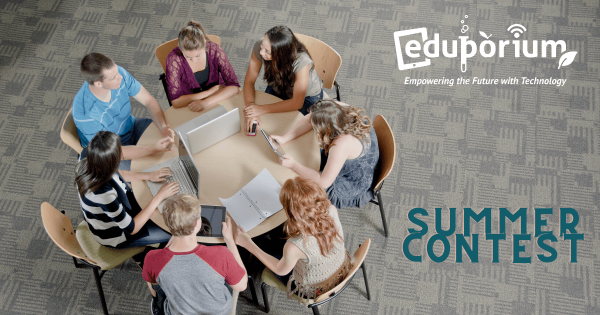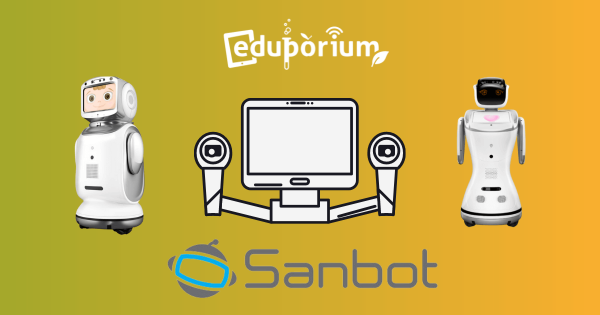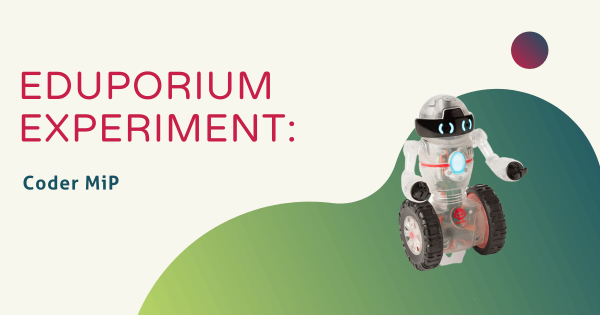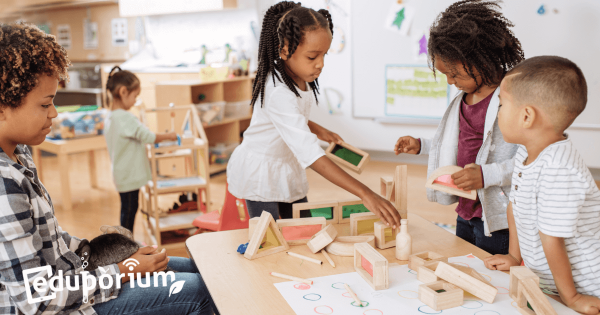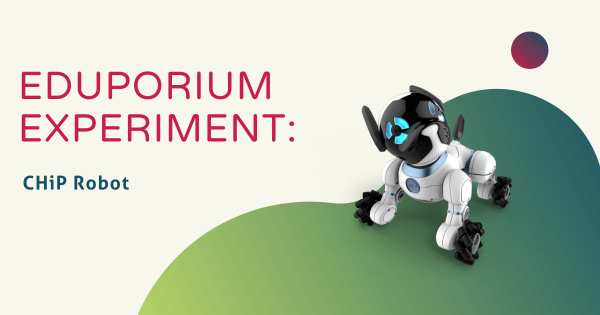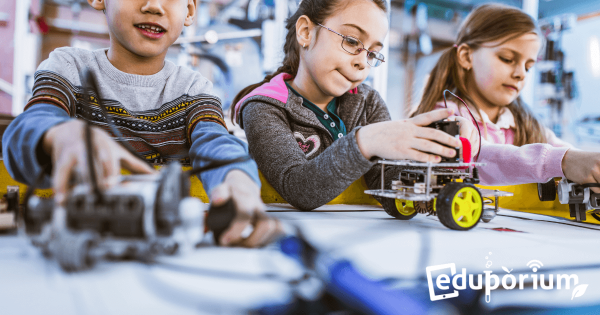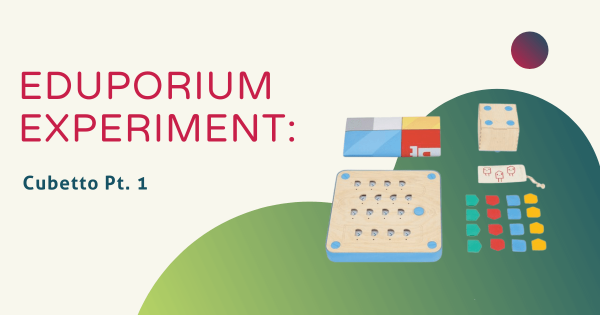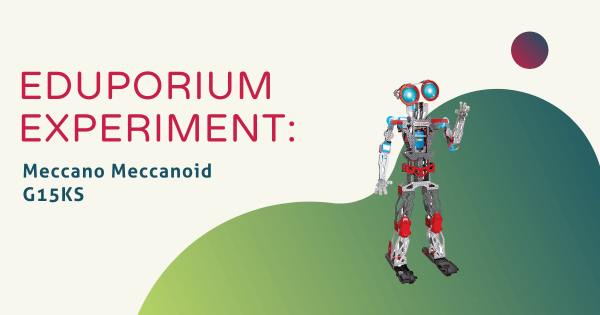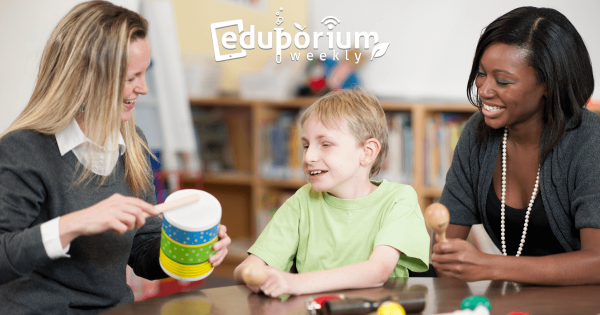With one quick sign-up, you could have the opportunity to win $100 worth of STEM, maker, and PBL tools to help revamp your classroom, library, or makerspace (or make it pop even more)! Our daily trivia contest is continuing all summer long with a new chance to win $100 to the Eduporium store every single night! Sign up to get
Robotics
Some of the most popular paths and effective approaches to preparing students for their future involve using robotics tools. A significant subsection of STEM education, coding robots and other types of programmable devices enable a large percentage of the STEAM learning that occurs in our schools. Using educational robotics tools, students from Pre-K to college can develop key coding skills. This is largely because, among these various robot kits, many are compatible with various programming languages. So, beginning in Pre-K, a child might use the Cubetto Robot in screen-free coding activities. Then, they might move on to the Bee-Bot or Blue-Bot for CS experiences that are slightly more complex. And, by the time they're in kindergarten or first grade, they have a legitimate foundation and they're ready to continue developing fluencies in coding, problem solving, and even computational thinking.
One reason robotics in education is so effective is due to various advances in robotics equipment for schools. Beyond introducing the absolute basics of coding early on (and without a screen), students can then progress to one of the most basic forms of coding, which you might know as Blockly. So many robotics tools incorporate the Blockly coding language along with their corresponding programming environment. In fact, the Ozobot Evo, Root Robot, Edison Robot, and Dash Robot are among the most popular elementary robotics tools. These help children build on coding and technology knowledge as they prepare for the next step—text programming. In text coding, they can use tools like the databot 2.0, NAO Robot, and most of the others we've mentioned. And, through these experiences, they can develop STEM skills in a tangible way while using robotics tools to do so.
-
Create a Smarter Future with the Sanbot Robot
More than just a service robot, the Sanbot provides authentic educational value and gives students feedback they can go on to use to improve their projects as they get more comfortable with robotics and technology! Designed to empower students from an early age, Sanbot teaches kids how to create a smarter future! -
Eduporium Experiment | Coder MiP
Parents and teachers sometimes shy away from introducing younger children to coding and robotics because they are under the impression that these subject areas are too complex for kids in the early grades. We are pleased to say, however, that, thanks to the recent revolution in educational robotics tools, there is no reason to fear coding. -
Eduporium Weekly | Activating Active Learning
If there are two students in the classroom and one is following along, trying to stay awake while a classmate recites a passage from their textbook and the other one is living the concepts the first one is reading about, which do you think is more fully engaged? No, this isn’t a trick question. The answer is Student 2 and -
Eduporium Experiment | CHiP Robot
We’ve come a long way from the days of the first robot toys for kids, and now we are able to use incredible technology to simulate behaviors very close to the ones displayed by our actual furry friends. You may have guessed—based on that introduction—that we have recently come across an EdTech tool that fulfills this fantasy. -
Thinking Of Buying Robotics Kits For Your School? Don't Miss This
The webinar will be hosted by Dennis Kambeitz, who works at a company called Robots.Education. Dennis is a world leader in understanding various impacts that robotics and tech will bring to the workforce and what needs to be done in schools to prepare students for it. Like us at Eduporium, he knows this chance is bigger and coming faster than -
Eduporium Experiment | Cubetto Pt. 1
Some educators prefer to stay away from screens altogether. With that being the case, how can we make sure students are still getting the 21st century education that they need to succeed? Luckily, early childhood education companies, like Primo Toys, are aware of this issue, and they care very much about making this type of critical education accessible. -
Eduporium Experiment | Ozobot Evo
The original Ozobot has made a huge impact in the field of STEM education with its accessible and intuitive control scheme and the Ozobot team is continually working hard to give students even more ways to learn. The Evo does everything the original Ozobot can do, including following lines of color-coded programming drawn by hand. -
Eduporium Experiment | Meccano Meccanoid G15KS
It’s widely-accepted that robotics education is critical to building 21st century STEM skills because it combines so many essential disciplines depending on what each specific robot can do. I bring up my own history with robotics because it’s very relevant to this week’s post on the Meccano Meccanoid G15KS, one of the more complex STEM robots. -
Eduporium Weekly | Maximizing Special Education With EdTech
While we realize that there’s a lot of technology for helping kids of all ages learn, we might sometimes forget that there are also tools to help students who learn in different ways. When it comes to school children with learning differences, EdTech tools can help them learn in the same ways they help the average kid learn—grabbing their attention




